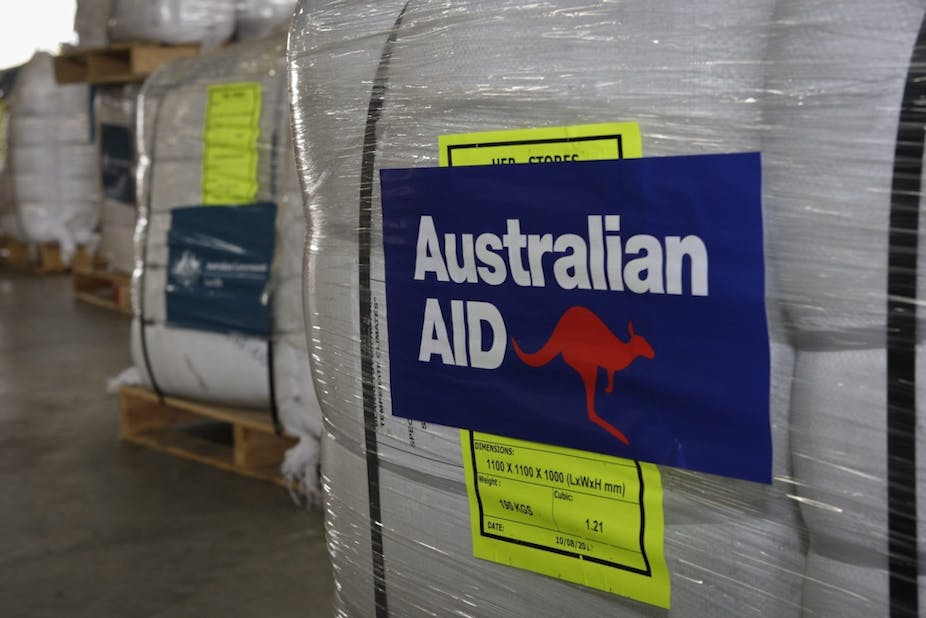As Australians head to the ballot box we are consumed with issues that are necessarily defined by national borders. However, as Australia takes up the presidency of the Security Council and attends the G20 in St Petersburg, it’s a good time to remember that we also have profound responsibilities as global citizens.
The Coalition’s pledge to reduce the growth of foreign aid by A$4.5 billion and divert this into infrastructure spending trades one investment - that of road infrastructure - for another, foreign aid.
No cost-benefit analysis was given. Just a short statement that suggests the core drivers and benefits for the rich giving to the poor have not been fully considered.
Sadly, both sides of politics appear to have a similar attitude. Labor has already twice delayed a promised increase to foreign aid and, worse still, recently redirected $750 million of the aid budget to fund asylum seeker programs.
The rich supporting the poor - a model that works
In families - and the global one is no different to those in our own constituencies - the primary responsibility of the fortunate is to support those with nothing. This model of the rich supporting the poor – at its highest level known as foreign aid – has worked brilliantly.
Through innovative foreign aid (vaccines, better agriculture for peasant farmers, improved access to education) the percentage of the world’s population living in extreme poverty has more than halved since 1990. While this amounts to approximately one billion people still living in a totally desperate circumstance, the improvement is profound. It has changed the world.
There have been many other extraordinary gains in the human condition. For example, the number of infants dying each year of preventable causes has plummeted from around 12 million in 1990 to fewer than seven million now. This success is all the more astonishing once the extraordinary population growth that has occurred over that time period is factored in (the World Bank is just one of many references to the numbers above).
Australia has contributed tremendously to the global aid effort. Through this support we have successfully helped our neighbours and fostered our own interests (see the 2012 Independent Review of Aid effectiveness, carried out by Sandy Hollway).
We now contribute approximately 0.35% of our gross national income to this effort, this year totalling A$5.7 billion (or around 1.4% of our annual budget). Australia has made a bipartisan commitment to increasing this to 0.5% GNI. This places us in the middle of the pack of donor countries. Australia gives, but is nowhere near the most generous. The UK for example, with all its economic difficulty, is on track to commit 0.7% of its GNI to foreign aid.
Millennium Development Goals
Most importantly, aid efforts have become better coordinated across the globe. The best example of this is a partnership by 189 sovereign nations to achieve the Millennium Development Goals. Here, nations committed to achieving hugely ambitious targets around improvement conditions for the worlds poorest people. Remarkably, with two years to run, and with some notable exceptions (maternal mortality especially), most of the goals have been achieved or near achieved. The world, through aid, has succeeded!
Once aid kicks in people shift from extreme vulnerability, and the market place takes over. Wealth is then created endogenously. Look at South Korea, Thailand, Malaysia and many others – including Africa, now undergoing extraordinary growth for examples of how aid delivers at national and regional levels.
Good for them, good for us
Aid not only helps the receiver, it is hugely beneficial to the giver. Aid (particularly to our Asia-Pacific neighbours) is an investment for Australia and can be purely seen in that light if that is one’s inclination. As receivers of Australian aid grow their economies they become significant trading partners of Australia providing enormous and critical benefit to our economy.
In terms of long-term investment, addressing the profound inequity and vulnerability of populations in our region and throughout the world outranks any other issue that is relevant to Australia.
If we want to do our bit to tackle the world’s largest problems such as uncontrolled population growth, food security and catastrophic climate change - or more immediately improve regional security and create economic wealth through new markets or investment opportunities - the situation of the world’s poor must be improved first. For example, fertility rates plummet to more sustainable levels with even modest increases in wealth.
Self-interest is a key reason why rich nations give foreign aid. It isn’t simply from the goodness of their hearts. They see it as a secure investment with huge returns.
Distributing our wealth through well-targeted aid to our desperately in need fellow humans is not just an act of generosity – although this is reason enough for many. It is an essential investment in our future.
And in that context it deserves to be weighed up in a sophisticated manner against other long-term investments, like Australian roads. Foreign aid is a crucial part of creating a better planet, is not just suitable for the “good times” when we are flush with cash.

